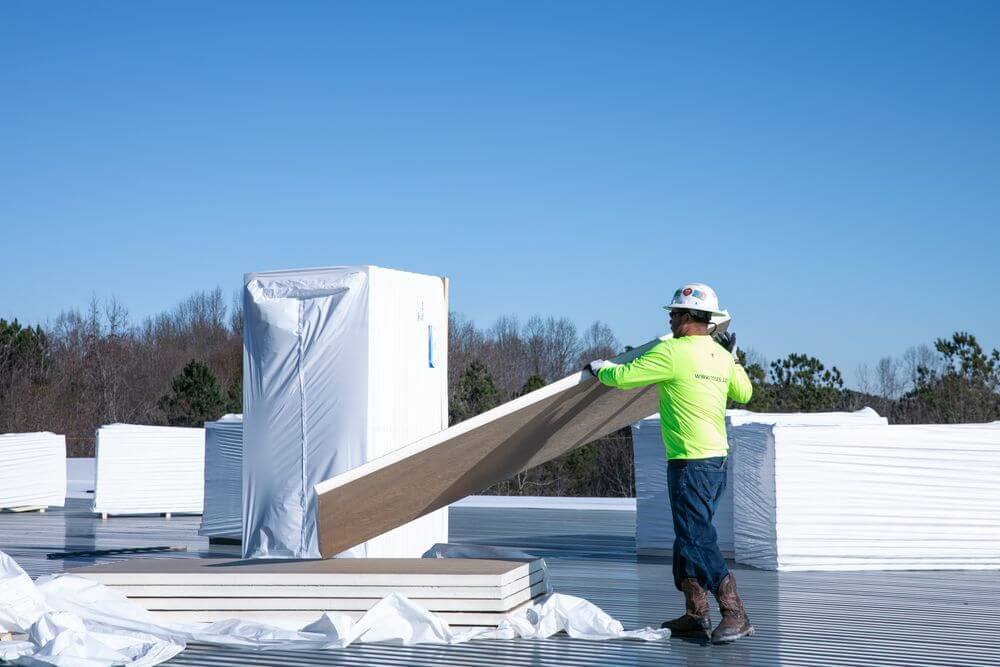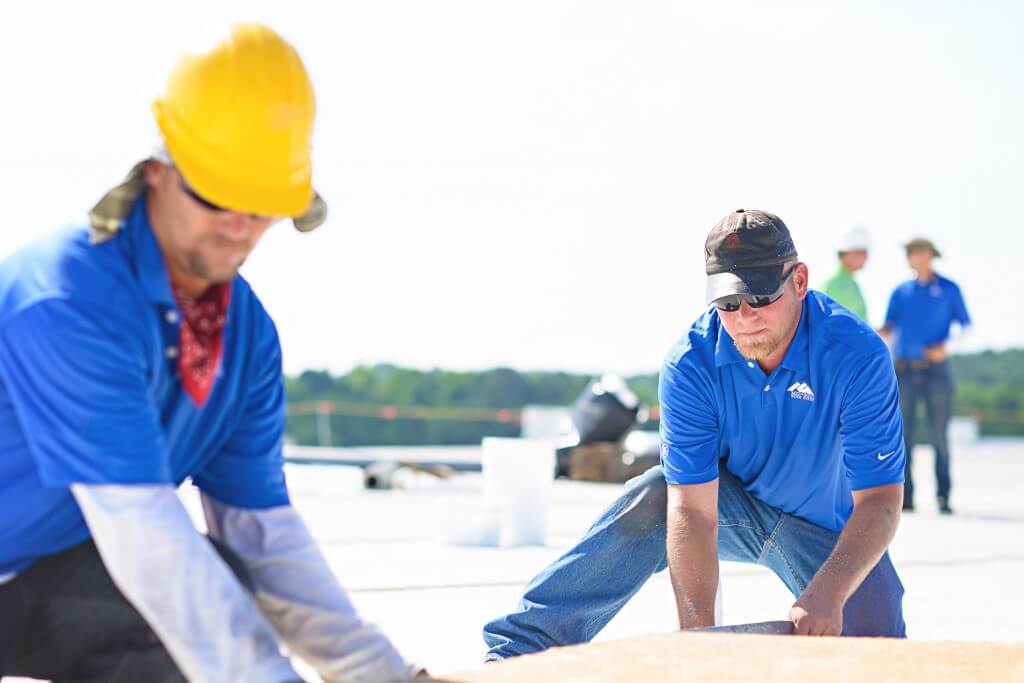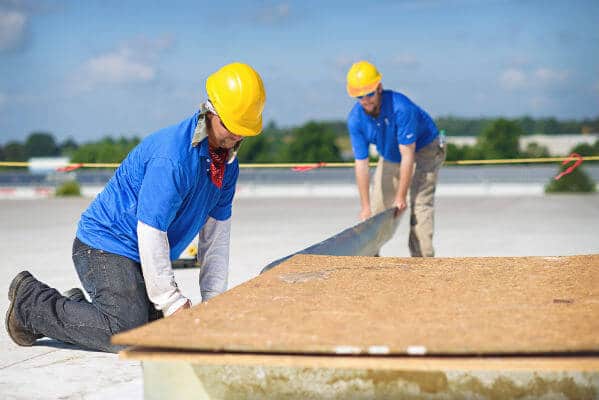Cool, Calm and Collected: Our Approach to Cold Storage Facility Roofing


Installing a commercial roof on a cold storage facility is a complex endeavor. A cold storage facility (also known as a refrigeration warehouse) is a temperature-controlled building where businesses can store perishable produce and products in bulk. These buildings are typically maintained between 32℉ and 45℉ and must be airtight to eliminate vapor and moisture exchange. If the airtight seals across the roof are installed incorrectly, the entire building can be compromised. This added pressure is why most contractors won’t even attempt to install a roof on this type of facility. A roofing contractor must have a great deal of expertise and experience to take on a cold storage facility project.
Challenges of Cold Storage Facilities
To the casual observer, a cold storage facility looks identical to an ordinary commercial warehouse. But beneath the exterior, the building is specially designed to be airtight and heavily insulated.
In a typical building, air can travel freely from the building to the ceiling, past the deck, and up to the roof’s insulation. Since the interior of a cold storage facility is maintained at a lower temperature than the exterior, the laws of physics dictate that warm, moist air from the outside will try to move to the building’s interior. A competent commercial roofer will install vapor barriers to prevent this natural air exchange from happening and avoid condensation.
Material Considerations for Cold Storage Facilities
A cold storage facility’s commercial roof should have an airtight and watertight seal with adequate insulation and a system to compensate for expansion and contraction. The roof system is installed in three distinct steps to accomplish a continuous thermal envelope. The first layer consists of normal sheet metal termination typically used on commercial roofs. Layer two is a Spray Polyurethane Foam (SPF) with Butyl Sealant. The third layer is a compression bar.
Repairing a Commercial Roof on a Cold Storage Facility
If warm air from the outside mixes with cold air from the inside below a freezer cooler roof, icicles will form. Icicles are a telltale sign that the building seal has been damaged or was installed incorrectly. The type/opacity of the icicles can provide clues on what went wrong. A professional roofer can interpret the icicles’ appearance to determine how to address the situation.
A cold storage facility repair might be as simple as adding a patch to the existing vapor seal or as complex as a complete reroof, which would require a re-cover with a new roofing membrane and vapor seal. To complete a cold storage facility reroof, the commercial roofer must coordinate with the building manager to bring the facility back to ambient temperature. Every repair project is different, so it’s critical to select an experienced team to handle cold storage facilities.
The Mid-South Difference
Mid-South’s team has a great deal of experience working with cold storage facilities. We recognize that communication is key to any successful installation or repair, especially when working with the additional considerations of thicker insulation and a complicated vapor seal. Our meticulous approach will involve a cooperative effort between our project manager and the building manager. We work closely to avoid inconvenient overlaps in operations and grant special access to controlled areas when needed. At Mid-South, we love a challenge, and the complexity of a cold storage facility is just another chance for our skilled team to rise to the occasion.
If you need a commercial roofing partner to complete your cold storage facility construction, please contact our team to discover the Mid-South difference.
LIKE WHAT YOU JUST READ?
Sign up for our newsletter to get fresh articles, updates and more!
Assess, Report and Decide: Get to Know Your New Building’s Roof
If you’re considering buying a new building, the very first item on your list should be to get an assessment of the roof’s condition. This analysis can prevent surprises down the line and—if the roof needs work—it can have a dramatic effect on the price you wind up paying for the building.
Why You Need A Roofer Onsite When You Install Your HVAC System
It’s common to place the heating, ventilating and air conditioning (HVAC) systems for large buildings on the roof. A successful rooftop HVAC installation usually involves the collaboration of an entire team of workers, so that issues related to the roof, structures, electrical and HVAC can be discussed beforehand. If an HVAC system is not coordinated…


